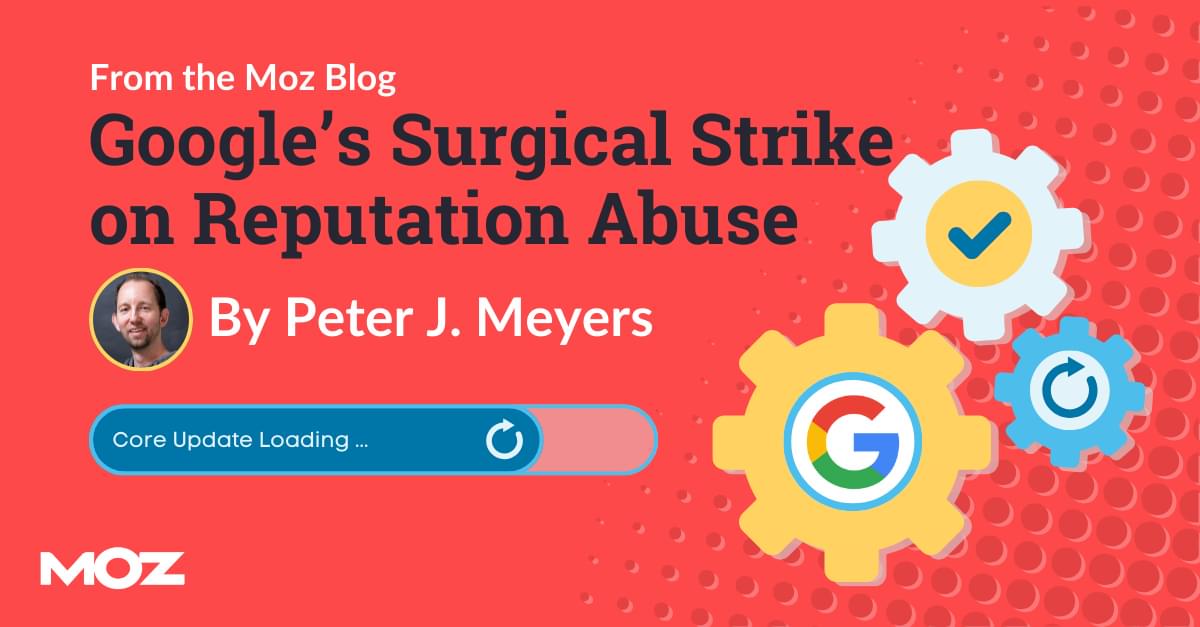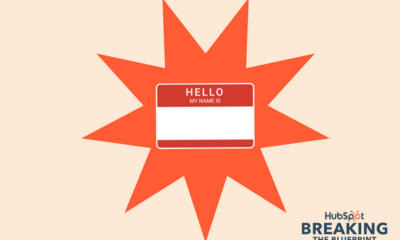MARKETING
Advertisers and audiences refute the idea that podcasts are on the wane

“The podcasting boom is over.” We all know that, right? We know this because it’s been reported everywhere. Since the start of the year The New York Times, Bloomberg, Vanity Fair, The Financial Times and many others have published stories about podcasting’s demise.
Advertisers and audiences missed the memo and continue to flock to podcast programming. Last year, podcasting ad revenues increased 26% — more than twice the rate of the total internet ad market, according to a new IAB report. By 2025 they are expected to hit $4 billion, up from $1.8 billion last year.
And the audience?
“I don’t understand this, like how are people talking about podcasting is not growing?” says Hetal Patel, iHeartMedia’s executive vice president of SmartAudio Intelligence. “On daily reach, every single demographic — 18 to 24, 25 to 34, 35 to 44, 45 to 54, 55 plus — have seen double-digit growth.”
Last year 62% of Americans over 12 — an estimated 177 million people — listened to a podcast. More than half of those people are now weekly podcast listeners. This year the news is even better: 183 million Americans have listened to a podcast, tuning into an average of nine podcast episodes per week, up from eight episodes in 2022, according to The Infinite Dial, Edison’s 2023 Report.
Dig deeper: Podcasts now a top channel for B2B marketing
While big audiences are great, what marketers really want is data that allows them to segment that audience and tailor content to each segment. This brings up something else “everyone knows” about podcasting: It’s not targetable or measurable. This idea is rooted in how podcasts are distributed. While some are heard on certain streaming platforms, they are mostly downloaded.
How targetable is it?
Patel understands how this idea came about.
“Podcasting, for the most part, is based in a download environment, outside of when it gets played on certain streaming services where they have server level data, right? So you have more visibility in those environments.
“In the last two years alone, we’ve made so much progress to get so much more deterministic about who you are reaching,” she says. “At iHeart, obviously, we can target by genre, we can target by age, by demographic, by location and enrich that data with information from our own app” to tell us about the audience that’s downloading on Apple and other platforms.
In addition to that, two years ago, the company launched 20 psychographic networks as part of its programmatic ad offering. They enable brands to buy across a set of shows that speak to specific consumer behaviors like the conqueror, explorer, legend, cultivator, decider, thriver, rising star, advocate, backer and intrepid.
Dig deeper: Casted adds firmographic data to its B2B video and podcast platform
“Sneakerhead is an example of one of those,” Patel says. “So if you’re trying to reach ethnic audiences sneakerheads tend to be more African American and Hispanic. I don’t think it’s so much that you couldn’t do that [level of segmentation] in podcasting before. I think it was more about we weren’t doing big enough campaigns to be able to measure that with the right thresholds.”
Brand safety
Another thing that can concern marketers about podcasts is brand safety. Unlike streaming, where shows are overseen by large companies, many of the most popular podcasts are independently produced. Can brands be sure of the content’s suitability?
Yes, says the IAB.
“Last year, the podcast industry made great advancements in brand safety and suitability targeting solutions via contextual transcript analysis including the opportunity to exclude individual podcast episodes,” they wrote. “As a result, advertiser awareness of these solutions are expected to grow and thus, advertisers will be more likely to tap into them.”
Patel says this technology also helps find content and content producers who are in synch with a brand’s values.
“It’s one thing to say these are 10 words I don’t want to be aligned with,” she says. “But it’s another thing to say and by the way, I want to be aligned around these things.”
IHeartMedia is using an AI-powered program that analyzes transcriptions of every podcast for the tone and context of the content.
“This gives you 35 attributes about this content,” she says. “You want to run next to content that’s uplifting? This is how you can do that. You want to run next to content that is XY&Z? You can do that.”
Get MarTech! Daily. Free. In your inbox.
MARKETING
Google’s Surgical Strike on Reputation Abuse

These aren’t easy questions. On the one hand, many of these sites do clearly fit Google’s warning and were using their authority and reputation to rank content that is low-relevance to the main site and its visitors. With any punitive action, though, the problem is that the sites ranking below the penalized sites may not be of any higher quality. Is USA Today’s coupon section less useful than the dedicated coupon sites that will take its place from the perspective of searchers? Probably not, especially since the data comes from similar sources.
There is a legitimate question of trust here — searchers are more likely to trust this content if it’s attached to a major brand. If a site is hosting third-party content, such as a coupon marketplace, then they’re essentially lending their brand and credibility to content that they haven’t vetted. This could be seen as an abuse of trust.
In Google’s eyes, I suspect the problem is that this tactic has just spread too far, and they couldn’t continue to ignore it. Unfortunately for the sites that were hit, the penalties were severe and wiped out impacted content. Regardless of how we feel about the outcome, this was not an empty threat, and SEOs need to take Google’s new guidelines seriously.
MARKETING
18 Events and Conferences for Black Entrepreneurs in 2024

Welcome to Breaking the Blueprint — a blog series that dives into the unique business challenges and opportunities of underrepresented business owners and entrepreneurs. Learn how they’ve grown or scaled their businesses, explored entrepreneurial ventures within their companies, or created side hustles, and how their stories can inspire and inform your own success.
It can feel isolating if you’re the only one in the room who looks like you.
MARKETING
IAB Podcast Upfront highlights rebounding audiences and increased innovation


Podcasts are bouncing back from last year’s slowdown with digital audio publishers, tech partners and brands innovating to build deep relationships with listeners.
At the IAB Podcast Upfront in New York this week, hit shows and successful brand placements were lauded. In addition to the excitement generated by stars like Jon Stewart and Charlamagne tha God, the numbers gauging the industry also showed promise.
U.S. podcast revenue is expected to grow 12% to reach $2 billion — up from 5% growth last year — according to a new IAB/PwC study. Podcasts are projected to reach $2.6 billion by 2026.
The growth is fueled by engaging content and the ability to measure its impact. Adtech is stepping in to measure, prove return on spend and manage brand safety in gripping, sometimes contentious, environments.
“As audio continues to evolve and gain traction, you can expect to hear new innovations around data, measurement, attribution and, crucially, about the ability to assess podcasting’s contribution to KPIs in comparison to other channels in the media mix,” said IAB CEO David Cohen, in his opening remarks.
Comedy and sports leading the way
Podcasting’s slowed growth in 2023 was indicative of lower ad budgets overall as advertisers braced for economic headwinds, according to Matt Shapo, director, Media Center for IAB, in his keynote. The drought is largely over. Data from media analytics firm Guideline found podcast gross media spend up 21.7% in Q1 2024 over Q1 2023. Monthly U.S. podcast listeners now number 135 million, averaging 8.3 podcast episodes per week, according to Edison Research.
Comedy overtook sports and news to become the top podcast category, according to the new IAB report, “U.S. Podcast Advertising Revenue Study: 2023 Revenue & 2024-2026 Growth Projects.” Comedy podcasts gained nearly 300 new advertisers in Q4 2023.
Sports defended second place among popular genres in the report. Announcements from the stage largely followed these preferences.
Jon Stewart, who recently returned to “The Daily Show” to host Mondays, announced a new podcast, “The Weekly Show with Jon Stewart,” via video message at the Upfront. The podcast will start next month and is part of Paramount Audio’s roster, which has a strong sports lineup thanks to its association with CBS Sports.
Reaching underserved groups and tastes
IHeartMedia toasted its partnership with radio and TV host Charlamagne tha God. Charlamagne’s The Black Effect is the largest podcast network in the U.S. for and by black creators. Comedian Jess Hilarious spoke about becoming the newest co-host of the long-running “The Breakfast Club” earlier this year, and doing it while pregnant.
The company also announced a new partnership with Hello Sunshine, a media company founded by Oscar-winner Reese Witherspoon. One resulting podcast, “The Bright Side,” is hosted by journalists Danielle Robay and Simone Boyce. The inspiration for the show was to tell positive stories as a counterweight to negativity in the culture.
With such a large population listening to podcasts, advertisers can now benefit from reaching specific groups catered to by fine-tuned creators and topics. As the top U.S. audio network, iHeartMedia touted its reach of 276 million broadcast listeners.
Connecting advertisers with the right audience
Through its acquisition of technology, including audio adtech company Triton Digital in 2021, as well as data partnerships, iHeartMedia claims a targetable audience of 34 million podcast listeners through its podcast network, and a broader audio audience of 226 million for advertisers, using first- and third-party data.
“A more diverse audience is tuning in, creating more opportunities for more genres to reach consumers — from true crime to business to history to science and culture, there is content for everyone,” Cohen said.
The IAB study found that the top individual advertiser categories in 2023 were Arts, Entertainment and Media (14%), Financial Services (13%), CPG (12%) and Retail (11%). The largest segment of advertisers was Other (27%), which means many podcast advertisers have distinct products and services and are looking to connect with similarly personalized content.
Acast, the top global podcast network, founded in Stockholm a decade ago, boasts 125,000 shows and 400 million monthly listeners. The company acquired podcast database Podchaser in 2022 to gain insights on 4.5 million podcasts (at the time) with over 1.7 billion data points.
Measurement and brand safety
Technology is catching up to the sheer volume of content in the digital audio space. Measurement company Adelaide developed its standard unit of attention, the AU, to predict how effective ad placements will be in an “apples to apples” way across channels. This method is used by The Coca-Cola Company, NBA and AB InBev, among other big advertisers.
In a study with National Public Media, which includes NPR radio and popular podcasts like the “Tiny Desk” concert series, Adelaide found that NPR, on average, scored 10% higher than Adelaide’s Podcast AU Benchmarks, correlating to full-funnel outcomes. NPR listeners weren’t just clicking through to advertisers’ sites, they were considering making a purchase.
Advertisers can also get deep insights on ad effectiveness through Wondery’s premium podcasts — the company was acquired by Amazon in 2020. Ads on its podcasts can now be managed through the Amazon DSP, and measurement of purchases resulting from ads will soon be available.
The podcast landscape is growing rapidly, and advertisers are understandably concerned about involving their brands with potentially controversial content. AI company Seekr develops large language models (LLMs) to analyze online content, including the context around what’s being said on a podcast. It offers a civility rating that determines if a podcast mentioning “shootings,” for instance, is speaking responsibly and civilly about the topic. In doing so, Seekr adds a layer of confidence for advertisers who would otherwise pass over an opportunity to reach an engaged audience on a topic that means a lot to them. Seekr recently partnered with ad agency Oxford Road to bring more confidence to clients.
“When we move beyond the top 100 podcasts, it becomes infinitely more challenging for these long tails of podcasts to be discovered and monetized,” said Pat LaCroix, EVP, strategic partnerships at Seekr. “Media has a trust problem. We’re living in a time of content fragmentation, political polarization and misinformation. This is all leading to a complex and challenging environment for brands to navigate, especially in a channel where brand safety tools have been in the infancy stage.”
Dig deeper: 10 top marketing podcasts for 2024
-

 SEO6 days ago
SEO6 days agoHow to Use Keywords for SEO: The Complete Beginner’s Guide
-

 MARKETING7 days ago
MARKETING7 days agoHow To Protect Your People and Brand
-

 MARKETING4 days ago
MARKETING4 days agoAdvertising on Hulu: Ad Formats, Examples & Tips
-

 MARKETING5 days ago
MARKETING5 days agoUpdates to data build service for better developer experiences
-

 MARKETING1 day ago
MARKETING1 day ago18 Events and Conferences for Black Entrepreneurs in 2024
-

 MARKETING6 days ago
MARKETING6 days agoThe Ultimate Guide to Email Marketing
-

 WORDPRESS4 days ago
WORDPRESS4 days agoBest WordPress Plugins of All Time: Updated List for 2024
-

 WORDPRESS5 days ago
WORDPRESS5 days agoShopify Could Be Undervalued Based On A Long-Term Horizon















